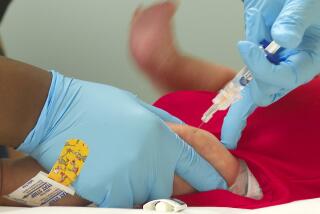Calif. official: Plans in place as 1st MERS case emerges in U.S.
As health officials in Indiana worked this week to manage the United States’ first case of Middle East Respiratory Syndrome, or MERS, their counterparts in California sought to reassure the public that the illness, while deadly, does not pose an imminent threat to the general population.
“The Indiana case doesn’t change anything in terms of our strategy,” Dr. James Watt, chief of the division of communicable disease control for the California Department of Public Health, said during an interview with The Times. “I wouldn’t advise anyone to change their activities.”
The MERS-CoV virus was first discovered in Saudi Arabia in 2012, and has infected hundreds of people in the that part of the world in the two years since. The virus, which is related to SARS, causes lung and kidney troubles. Scientists worry about its spread because it has killed around a third of the people it is known to have infected.
Watt said that California public health officials had been closely monitoring MERS “since the beginning.” The virus emerged around the same time that the killer H7N9 bird flu began circulating in China, he said -- leading the state to form a team that worked with local jurisdictions to track and respond to both diseases.
To fight MERS, Watt said, the state has emphasized communications with local healthcare providers, reminding hospitals and doctors to be on the lookout for patients with respiratory illness who have recently been to the Middle East, or have come in close contact with someone who has just returned from that part of the world.
The idea is to detect cases quickly and contain the disease before it can infect others--much as medical teams did last week in Indiana. Because MERS doesn’t spread as easily as a virus like the flu, vigilance and good infection control practices in hospitals should limit its spread, Watt said.
Since the beginning of the outbreak, California healthcare workers have flagged 28 “suspected cases,” sending samples from the patients to state laboratories to be tested for MERS. All came back negative.
The cases were reported in 14 counties, a department spokesman said. Los Angeles, with six patients tested, had the most suspected cases.
“We knew this was likely to happen,” Watt said of the sickened patient in Indiana. “On the positive side, it’s reminded the healthcare community of the disease -- what’s the definition, who should you be thinking about, and how do you test.”
He recommended that Californians who want to learn more about MERS prevention visit the CDC’s MERS website for further information.
More to Read
Sign up for Essential California
The most important California stories and recommendations in your inbox every morning.
You may occasionally receive promotional content from the Los Angeles Times.











